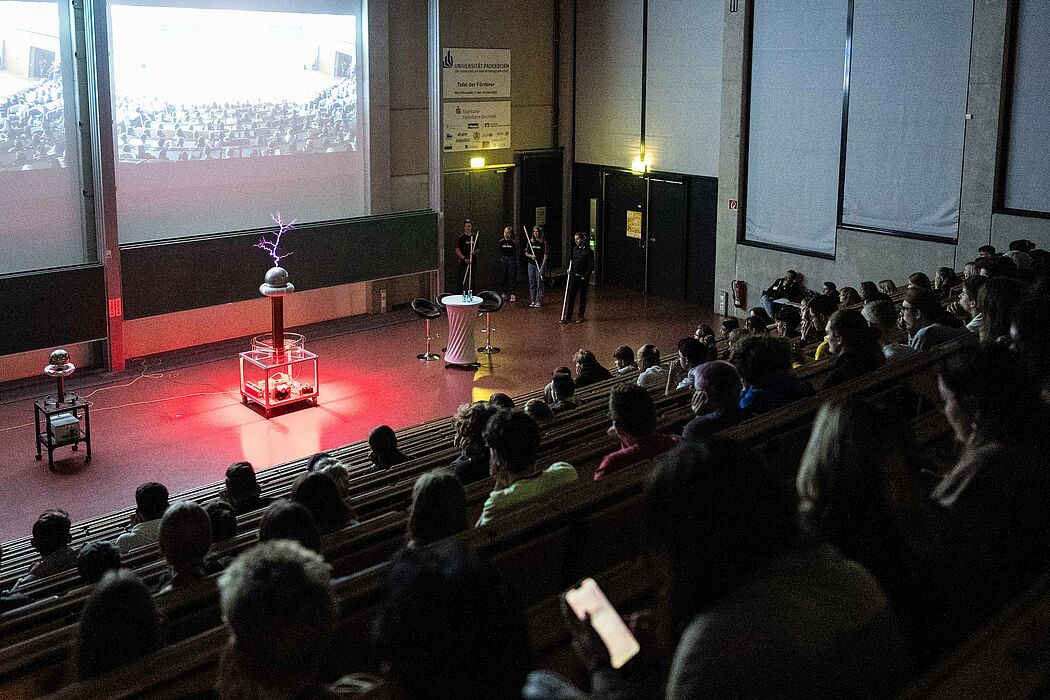
Its finally done. After weeks of designing and problem solving followed by a lot of documenting and commenting, I have finally finished building, testing, documenting and publishing a Musical Tesla coil controller capable of running multiple tesla coils at once, with more than 1 musical tone per Tesla coil. This makes for some impressive displays.
After finishing my first Tesla coil, a few people with the EventPhysika here at the Universität Paderborn, noticed the Tesla coil. They perform these large demonstrations of physical phenomena to encourage students to pursue careers in the Sciences. They have been after a singing Tesla coil of their own for a while now, they just lacked the understanding to pull it off.
So whereas the one I built was designed to be small and easily compact, they wanted something as large as their existing rotary spark gap Tesla coil. So for the next 6 months I assisted their team with designing and building a second, but much larger DRSSTC. While they were happy with a single working singing Tesla coil, I wanted to push the boundaries a bit further. Since they needed their own Tesla coil controller to play music, I needed to build a second one anyways.

From a technical point of view , the resources to control two Tesla coils at once are somewhat present. Outside of the physical drive components needed to drive a second fibre optic channel, the peripherals required from the microcontroller are already present. Its just a matter of writing the new code and making it usable for a user. Hence a new display format which has all the information about the current operation on the display, in two (understandably criptic) lines.

Tester
The issue with having potentially 4 MIDI files played at the same time, is the difficulty in ensuring that the configuration of MIDI channels actually sounds decent. While most online MIDI files often include at least one track containing the Melody and perhaps a secondary backup track, they may be an octave too high or too low to sound ok on a Tesla coil. However when I am searching for 4 channels that play well together finding a suitable MIDI file is difficult, if not impossible.
So I designed a little testing device, using the speakers from an old PC speaker system, to emulate a Tesla coil, in as far as they are to produce a single pulse of air following each pulse from the Tesla controller. This is invaluable to finding good Midi files and their associated settings, without needing to turn on two Tesla coils.
Finally published
While this project doesn’t differ significantly from the single channel capable device, it was better documented, with the code and all the 3D files published in a Github repository. This hopefully means that other Tesla coil tinkerers can go from their fixed frequency 555 based interrupters to a musical tesla coil, while skipping the “Arduino programmed with fixed tones” phase.

